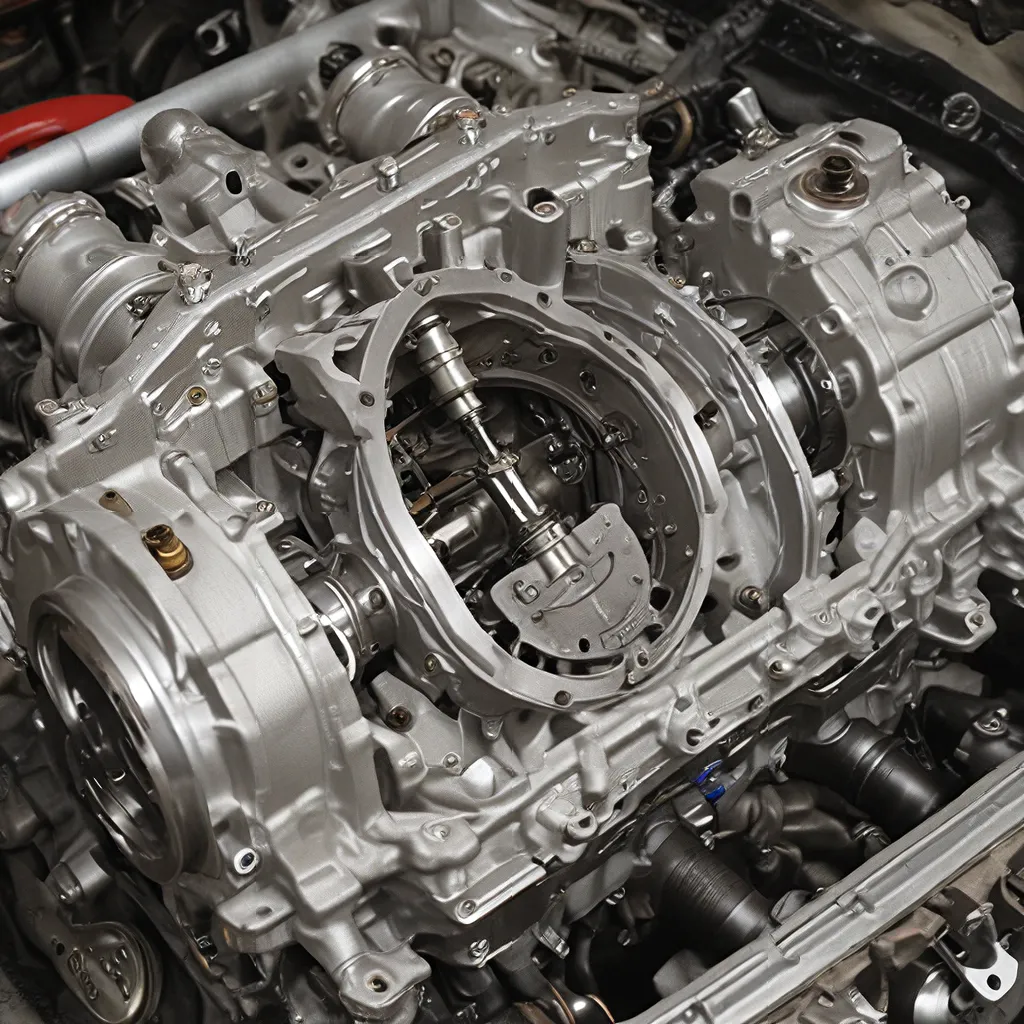
Picture this: You’re cruising down the highway in your trusty Nissan, enjoying the wind in your hair and the roar of the engine. But wait, something’s not quite right. That familiar purr has become a bit, well, grumpy. Don’t worry, my fellow Nissan enthusiasts, I’ve got your back. Today, we’re diving deep into the world of Nissan valve adjustment, uncovering the secrets to keeping your engine running like a dream.
The Importance of Valve Adjustment
Let’s start with the basics. Your Nissan’s engine is a complex piece of machinery, and the valves play a crucial role in its smooth operation. These little guys control the flow of air and fuel into and out of the cylinders, ensuring optimal combustion and power delivery. Now, over time, those valves can get a bit out of whack, causing all sorts of problems – from decreased fuel efficiency to that dreaded “knocking” sound that sends shivers down your spine.
That’s where valve adjustment comes in. By carefully fine-tuning the clearance between the valves and the engine components, you can restore that silky-smooth performance and keep your Nissan running like a well-oiled machine. It’s like a regular tune-up for your car’s heart and lungs, ensuring it’s firing on all cylinders (pun intended).
The Nissan Valve Adjustment Process
Alright, let’s get into the nitty-gritty. Performing a valve adjustment on your Nissan is a bit of a delicate dance, but with the right tools and a little know-how, you can master it like a pro. Here’s a step-by-step guide to get you started:
Step 1: Gather Your Supplies
You’ll need a few key tools for the job: a torque wrench, a feeler gauge, and a service manual specific to your Nissan model. Trust me, that service manual will be your best friend throughout the process.
Step 2: Locate the Valves
Depending on your Nissan model, the valves may be accessible from the top or the side of the engine. Consult your service manual to identify the valve locations and plan your attack.
Step 3: Measure the Valve Clearance
Using your feeler gauge, carefully measure the gap between the valve stem and the rocker arm or cam lobe. This clearance should be within the manufacturer’s specified range – typically between 0.20 and 0.30 millimeters. If the gaps are too wide or too narrow, it’s time to make some adjustments.
Step 4: Adjust the Valves
This is where the magic happens. Loosen the locknut or adjusting screw, then use the torque wrench to carefully tweak the valve clearance until it’s just right. Remember to tighten everything back up once you’re done, and double-check your work to ensure everything is secure.
Step 5: Repeat the Process
Don’t stop at just one valve! Methodically work your way through each and every valve in the engine, making sure they’re all dialed in to perfection.
The Benefits of Proper Valve Adjustment
Now, you might be wondering, “Why go through all this trouble? Can’t I just leave my valves alone and call it a day?” Well, my Nissan-loving friend, let me tell you, the benefits of proper valve adjustment are well worth the effort.
Improved Fuel Efficiency
When your valves are properly adjusted, they can open and close with precision, allowing the perfect amount of air and fuel to enter the cylinders. This means your engine can operate at peak efficiency, consuming less fuel and saving you money at the pump.
Increased Power and Performance
With those valves working in harmony, your Nissan’s engine can unleash its full potential. You’ll feel the difference in acceleration, responsiveness, and overall driving dynamics – it’s like injecting a shot of adrenaline into your beloved ride.
Reduced Engine Wear and Tear
Properly adjusted valves minimize the stress and strain on your engine components, helping to extend the life of your Nissan. By keeping everything in perfect alignment, you’re investing in the long-term health of your vehicle.
Quieter, Smoother Operation
Say goodbye to those pesky rattles, knocks, and other unpleasant engine noises. A well-tuned valve train will help your Nissan run as smooth and quiet as the day you drove it off the lot.
So, there you have it, folks. Valve adjustment may seem like a daunting task, but with a little know-how and the right tools, it’s a surefire way to keep your Nissan running at its best. And trust me, the rewards are well worth the effort.
Maintaining Your Nissan’s Performance
Of course, valve adjustment is just one piece of the puzzle when it comes to keeping your Nissan in tip-top shape. Regular maintenance, such as oil changes, tire rotations, and brake inspections, are also essential for preserving the long-term health and performance of your vehicle.
Nissan has a wealth of resources available to help you stay on top of your vehicle’s maintenance needs. From the owner’s manual to the helpful staff at your local Nissan dealership, you’ve got a team of experts ready to guide you through every step of the process.
Remember, your Nissan is more than just a mode of transportation – it’s a reflection of your personal style and a source of driving joy. By taking the time to properly maintain and adjust your vehicle, you’re not only preserving its performance, but you’re also investing in the long-term enjoyment of your driving experience.
So, what are you waiting for? Get out there, grab your tools, and start fine-tuning your Nissan to perfection. Who knows, you might even discover a newfound appreciation for the inner workings of your beloved ride. Happy tuning, my fellow Nissan enthusiasts!






